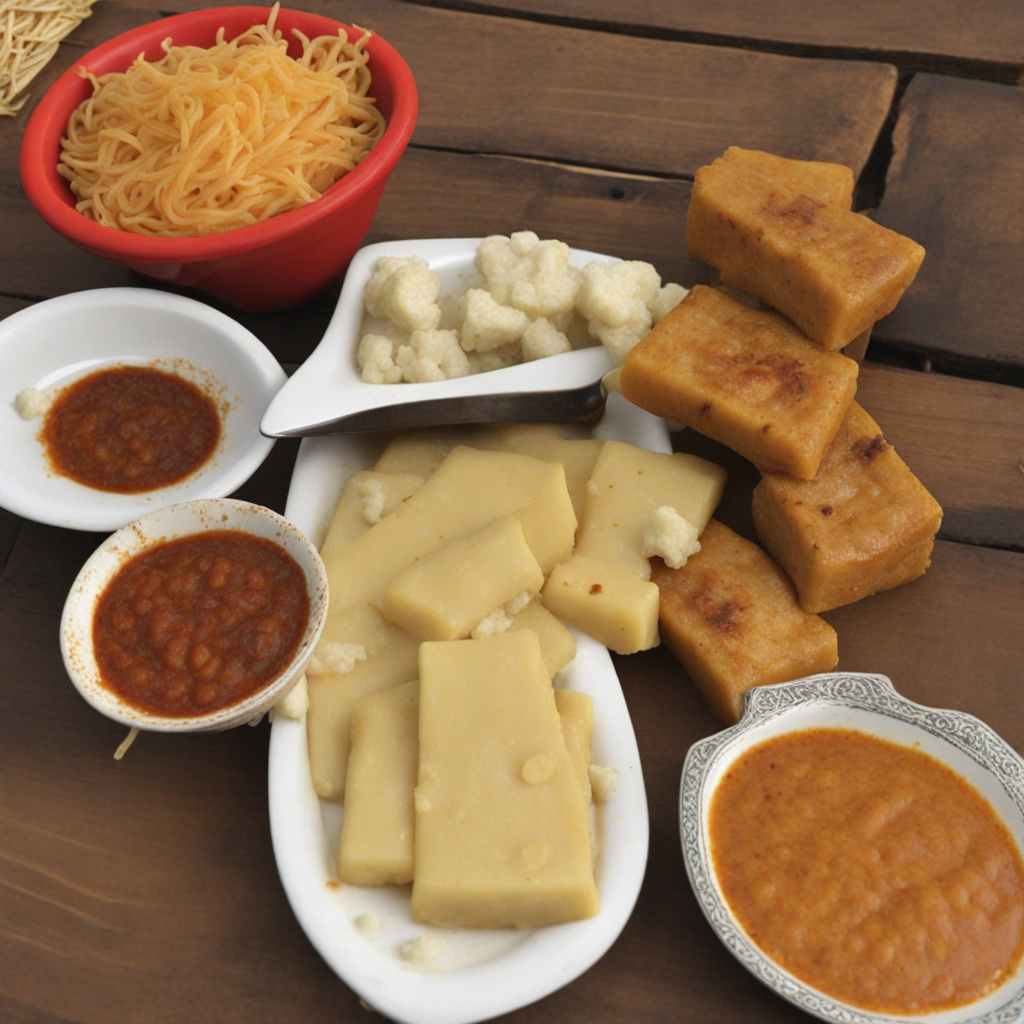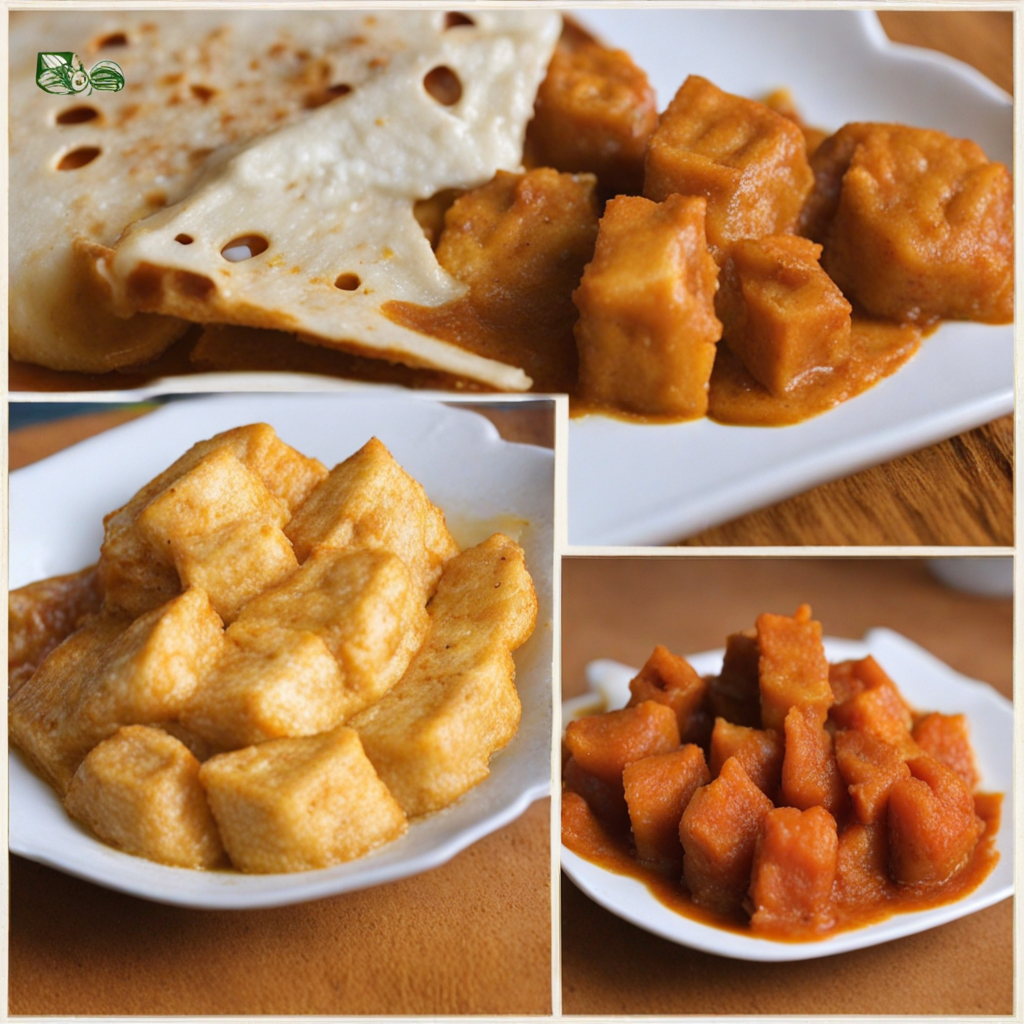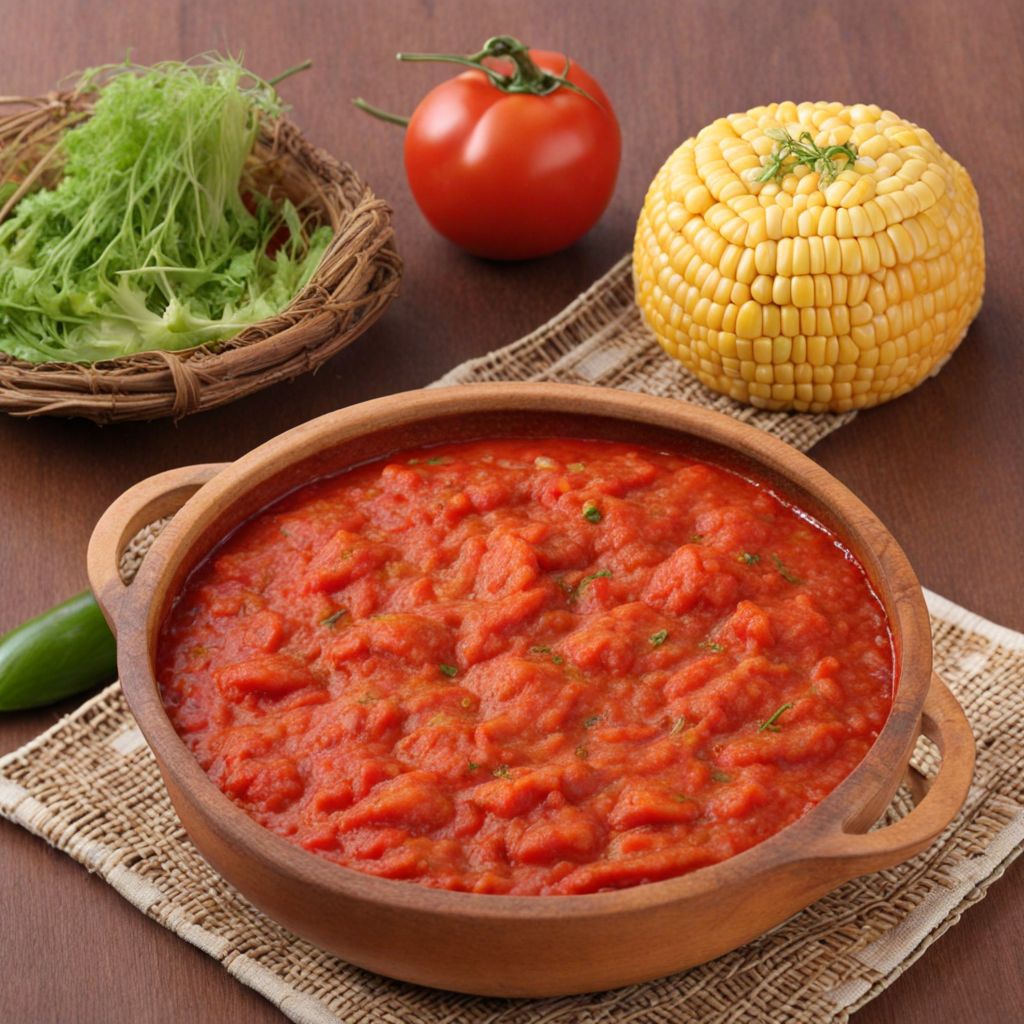Wagasi
Wagasi, a delightful culinary gem from Benin, is a traditional cheese made from fermented soybeans. This unique food item showcases the country's rich agricultural heritage, as it is primarily crafted using locally sourced ingredients. The process of making Wagasi involves soaking soybeans, grinding them, and then fermenting the mixture, resulting in a soft, creamy texture that is both versatile and nutritious. The fermentation not only enhances its flavor but also imbues the cheese with probiotic benefits, making it a wholesome addition to any diet. The flavor profile of Wagasi is subtle yet distinctive, characterized by its mildly tangy and nutty notes. This cheese can be enjoyed in various ways; it can be eaten fresh, grilled, or incorporated into a variety of dishes. It pairs wonderfully with spices and herbs, allowing it to absorb flavors beautifully. Whether crumbled over salads or used as a filling in pastries, Wagasi effortlessly adds a touch of richness to any meal. This adaptability has made it a beloved ingredient in many households across Benin. Wagasi is not only a culinary delight but also a cultural staple that reflects the communal spirit of Benin's food traditions. Often served during family gatherings or special occasions, it embodies the essence of sharing and togetherness. This cheese is a testament to the ingenuity of local artisans who have perfected the craft over generations, making it a must-try for anyone looking to explore the vibrant flavors of Benin. With its unique taste and texture, Wagasi invites adventurous eaters to discover a new dimension of food that is both satisfying and nourishing.
How It Became This Dish
The History of Wagasi: A Culinary Jewel of Benin Wagasi, a traditional cheese from Benin, is more than just a food item; it embodies the essence of the country’s cultural heritage, agricultural practices, and social dynamics. As a food historian, exploring Wagasi reveals the intricate tapestry of Benin’s history, its agricultural roots, and its community-centric way of life. #### Origins of Wagasi The origins of Wagasi can be traced back to the pastoral communities of West Africa, particularly among the Peulh (Fulani) people, who are known for their nomadic lifestyle centered around cattle herding. The name "Wagasi" itself is derived from the local language, where it is often referred to as a fresh cheese made from cow's milk. This cheese-making tradition is believed to have been influenced by various factors including the availability of dairy animals, local climate conditions, and the cultural practices of the communities that have inhabited the region for centuries. Historically, Benin was a hub of trade, culture, and agriculture, with its fertile lands supporting diverse farming practices. The introduction of dairy cattle in the region allowed for the production of milk, which became a staple in the diet of many communities. The production of Wagasi likely began as a means to preserve surplus milk and as a source of nutrition in a region where food preservation methods were limited. As the demand for high-protein foods grew, so too did the significance of dairy products, including Wagasi. #### Cultural Significance Wagasi holds deep cultural significance within Benin’s culinary landscape. Traditionally, it is produced in small, family-owned dairies or by women who are skilled in the art of cheese-making. The process of making Wagasi is often a communal affair, reflecting the importance of community and shared knowledge in Benin’s culture. Women play a crucial role in this process, passing down techniques and recipes through generations. This not only empowers them economically but also reinforces their social standing within the community. Wagasi is more than just a food item; it is a symbol of hospitality and communal sharing. It is often served as a snack, breakfast, or as part of ceremonial meals and celebrations. In many households, serving Wagasi to guests is a sign of respect and generosity. Its incorporation into various dishes, often accompanied by traditional staples such as cassava, yam, or corn, showcases the versatility of this cheese as an ingredient that enhances the overall flavor profile of meals. #### Development Over Time As Benin underwent historical transformations—including colonization, the fight for independence, and the evolution of its economy—the production and consumption of Wagasi also adapted. The colonial period introduced new agricultural practices and market dynamics that influenced local food systems. Despite these changes, Wagasi remained a staple due to its nutritional value and cultural significance. In the post-colonial era, as Benin embraced modernization, the production of Wagasi began to evolve. While traditional methods of cheese-making are still prevalent, some producers have started to adopt more contemporary techniques to improve hygiene and extend shelf life. The introduction of new technologies and equipment has allowed for the scaling up of production, enabling Wagasi to reach broader markets, both domestically and internationally. The rise of urbanization in Benin has also impacted the consumption patterns of Wagasi. As more people moved to urban areas for work, there was a growing demand for convenient, ready-to-eat food options. This shift has led to the commercialization of Wagasi, with some producers packaging the cheese for sale in local markets and supermarkets. As a result, Wagasi has gained recognition beyond its immediate geographic boundaries, becoming a culinary delight for those seeking authentic West African flavors. #### Challenges and Resilience Despite its rich heritage and growing popularity, the production of Wagasi faces numerous challenges. Issues such as climate change, the increasing cost of cattle feed, and competition from imported dairy products have put pressure on local cheese makers. Additionally, the younger generation is increasingly drawn to urban lifestyles, leading to a decline in traditional cheese-making practices. However, the resilience of the communities that produce Wagasi cannot be underestimated. Efforts to promote sustainable agricultural practices are underway, emphasizing the importance of preserving local food traditions. Various organizations and NGOs are working to support local farmers and cheese producers, helping them to improve their production methods while maintaining the authenticity of Wagasi. Furthermore, the global food movement has sparked a renewed interest in traditional foods, including Wagasi. Chefs and food enthusiasts around the world are discovering the unique flavors of Benin’s cuisine, leading to collaborations and initiatives that highlight the importance of local, artisanal products. This resurgence not only helps to sustain the production of Wagasi but also elevates the culinary heritage of Benin on a global stage. #### Conclusion Wagasi is more than just a cheese; it is a reflection of the rich cultural heritage and agricultural practices of Benin. From its origins among the nomadic Fulani to its status as a beloved staple in modern Benin, Wagasi embodies the resilience and adaptability of local communities. As it continues to evolve in response to changing times, this traditional cheese remains a cherished symbol of hospitality, community, and the rich culinary tapestry of West Africa. Efforts to preserve and promote Wagasi not only honor the past but also pave the way for a sustainable future where traditional foods can thrive alongside modern influences. In celebrating Wagasi, we celebrate the enduring spirit of Benin and its people.
You may like
Discover local flavors from Benin







